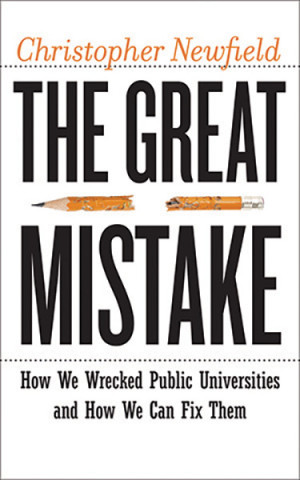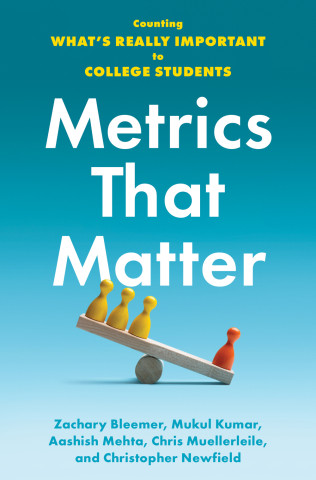 |
| UCI May 25, 2018 |
Non-core and UCI Health may be conducting layoffs as well, but I haven’t seen any indication of this. The UC rule of thumb has been cuts to the educational core come only as a last resort. It’s often honored in the breach, and I don’t see that UCI is following it now.
UCI’s core funding is governed by a new Budget Model and multi-year planning process. It was tried out in 2024 -25 (FY25) and has been modified for the upcoming year (2025-26 or FY 26).
I certainly urge UCI folks to Know Your Budget Model by reading this page carefully, especially the Draft Framework (FY25) and Final Model Comparison (FY26) at the bottom. As former UCSB faculty I am retroactively jealous that you have at least these materials publicly visible for reading and discussion.
I’ll mention three things about the Final Model for this upcoming year.
1. the student metrics are intelligently skewed towards department workloads rather than majoring. Fields that are losing majors but still have lots of student interest as expressed in attendance, as do many humanities fields, have their teaching workloads acknowledged in the form of Student Credit Hours (80%). “Enrollments” (the standard UC wrong name for “majors”) are only 10%, and degrees granted are another 10%.
UCI people will know things I don’t about how this sausage was made, but as such things go it’s pretty good sausage.
2. Central administration will now “cover 70% of each school’s average faculty salary and benefits. Remaining faculty, staff, and operating needs are supported through other mission-based budget model components (e.g., student metric-based and other core and non-core sources).”
This is a modification of Responsibility Centered Management systems from the 1990s that have settled in all over. They were to replace incremented budgeting by tying a unit’s ability to spend to that unit’s ability to earn money. RCM has various negative effects and this 30% version ties School revenues to (1), the student metrics. Since the 70% and the other 30% of tenure-track faculty salaries and benefits have to be paid, shortfalls will affect non-tenure track “faculty, staff, and operating needs.” But there’s a base of 70% of faculty payroll—tenure-track or “Senate” faculty, I presume.
3. The FY26 model introduces a new factor, “Student Metric-Based: Differential $/Student.” UCI Finance has taken disciplinary benchmarks from the National Study on the Cost of Instructional Productivity at the University of Delaware and applied them to UCI Schools. (Falling participation has caused the sponsor, the Higher Education Consortia, to cancel the cost study after the 2024 results are published this month.)
(1) and (2) by themselves would produce a quasi-egalitarian revenue pattern for instruction. The Schools of Engineering and the Humanities, for example, would each get 70% of payroll and then get the same amount per (weighed) student to cover the other 30% of costs—so more if they teach a lot of students and less if they don’t. Engineering would have much additional revenue based on Contracts & Grants income mainly not available to School of Humanities fields, plus ICR revenues, corporate contracts, and the like. Higher facilities and equipment costs for engineering vs. humanities instruction was covered in the old incremental budgets based on past practice. However, high-cost schools (Arts if it has lots of studios), or Engineering if its extramural research has facilities and administration needs that run up losses (see Part 1), would require subsidies from central administration. These subventions are in my view completely legitimate in higher ed. Once the myths are punctured and everyone is used to the conversation, subsidies could be quantified and discussed on campus.
But the inclusion of (3), the student FTE weighs, means that instructional revenues will not be equal. Some schools will get less per student and others will get more. This was always the case, but inequalities tend to get more extreme under pressure. Inequalities per student generate equity problems for students. A great way to get less money back in your education than you pay in tuition is to major in Social Ecology rather than in Physics, Bio, or Engineering.
Benchmarks exist to identify real empirical costs and to conclude that the Social Ecology student isn’t getting screwed because the same quality education costs more in Engineering than it does in Social Ecology. This claim has been an object of controversy in the literature for decades (an early classic is Michael Power, The Audit Explosion (1994, expanded as The Audit Society)). Social ecology might have reached levels of educational impact that it cannot under a benchmark that is basically an aggregate of past funding custom.
This raises the question of why UCI Finance would use a benchmark rather than study its own units and engage in discussions with faculty, staff, even students about costs. Faculty and students would have views about what there aren’t able to achieve cognitively that they could with 25% smaller courses or whatever it is. The discussion is more work and cost, of course, but it would involve the campus in setting educational goals and then structuring budgets around education.
However, external benchmarks have a couple of major managerial benefits. One is avoiding exactly this kind of institutional discussion of resource equity, which involves distributed governance. Another is that they are used to (re)distribute resources unequally—allegedly to reflect unequal needs.
Here are some figures based on the best current data that have come across my desk.
Figure 1
These are UCI’s 14 Schools, with mostly student-based revenues (state, tuition, Student Service Fee, plus some research based Indirect Cost Recovery money (mainly in STEM Schools), plus some subsidies to soften budget cuts in some places, also from the same sources. Cuts are not so far off the 3.5% percent the UCI Provost said would be the campus baseline. Generally the changes from 2023-24 (FY24) to this past year (2025-26, or FY26) don’t look so bad overall—compared to the budget mayhem in federal research if the U.S. Senate doesn’t block it.
Shifting to per-student funding tells a different story. I believe that the exercise is to be applied to the 30% of School funding based on student numbers, but the figures used are School totals, so 100%.
Figure 2
Here the results of what seem a small reduction in overall core budgets (3.5%) are dramatic. All Schools get hit. I don’t know how these per-student reductions could be implemented. Student instruction would be severely damaged, as would the faculty and staff that would undoubtedly be fired under this kind of a scenario.
Where do these cuts come from? It appears that the Delaware benchmarks are used to assign funding ratios depending on how much higher a particular UCI School’s State/Tuition/Other budget for FY24 comes in above the benchmark. It is assigned a ratio in relation to new gets a ratio which is used to give each School a new baseline of per-student funding. The reductions are startling: from $16,869 as weighted per-student FTE income at the end of FY24, to $8434 as a target per-weighted-student average in the year just ended (FY25). That is half of the previous year. The target reduction for the coming year, FY26, seems to be $6,825 per weighted student.
The differences in marginal changes are also striking. If you compare Figure 3 to Figure 1 you can see that the percentage changes are mostly in single digits. But the variance deserves discussion. The educational effects need a full airing.
Figure 3
Why is this happening? My main hypothesis is that this is how you use core funds to generate a surplus. You can move it from one School to another, and from core to non-core. UCI does have to find $132 million or so to support unfunded research costs.
This is the place where I’d normally issue a call to all university parties to address root causes, which always includes rebuilding the state funding that UC admin has basically given up on.
But I don’t have a clear picture of where this model really wants to set School per-student expenditures, or why it set these very low baselines, or how a number UCI Schools can survive it without a messy array of one-time subsidies that keep getting renewed. So I urge my UCI colleagues to find out.


.png)




1 comments:
Good to see you back, Christopher!
Join the Conversation
Note: Firefox is occasionally incompatible with our comments section. We apologize for the inconvenience.